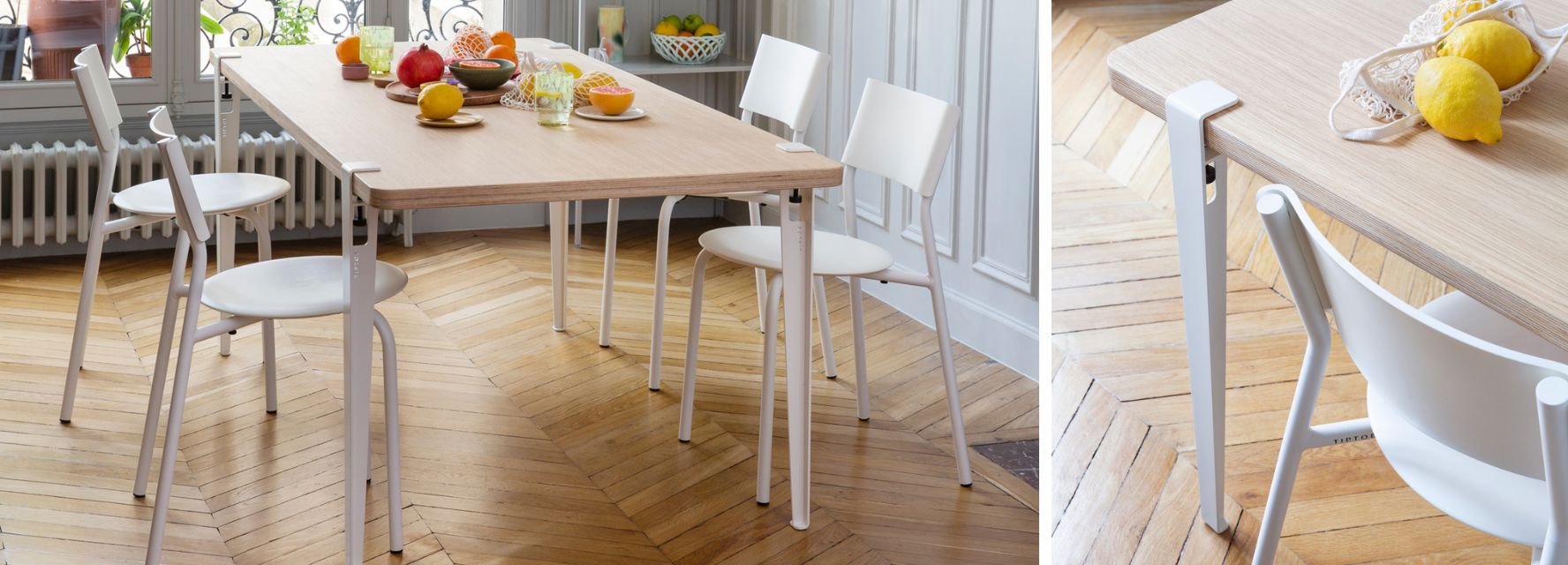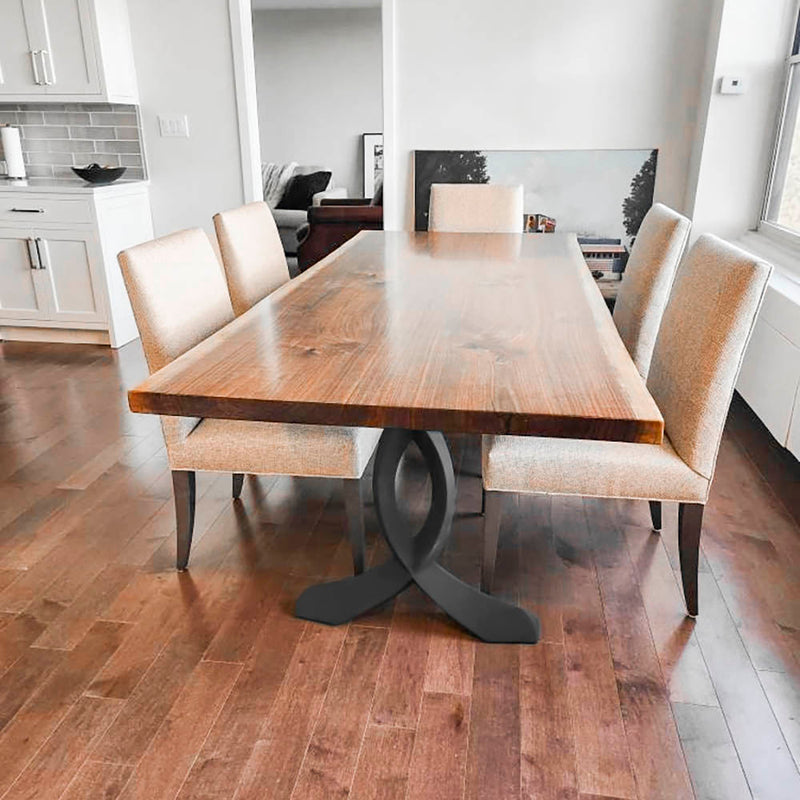Tips for Installing Dining Room Table Legs for a Modern Look
Tips for Installing Dining Room Table Legs for a Modern Look
Blog Article
From Conventional to Modern: Locate the Ideal Dining-room Table Legs for Your Design
The selection of dining-room table legs plays a crucial role in specifying the general personality of your area, connecting the gap in between typical craftsmanship and modern-day aesthetic appeals. While traditional designs such as cabriole and turned legs stimulate a feeling of classic elegance, modern designs like barrette and geometric options present an opportunity for striking aesthetic interest. Examining the best equilibrium between these designs needs a nuanced understanding of your existing decoration and individual preference. As you consider these elements, the inquiry remains: how can you effortlessly integrate these varied leg designs to develop an unified dining experience?
Understanding Table Leg Styles
The selection of dining room table leg designs can significantly affect both the looks and capability of the area. Each leg design adds distinct aesthetic components and useful features, satisfying varied design preferences and use demands. Recognizing these designs is important for picking the appropriate dining table that aligns with your general interior decoration vision.
For example, tapered legs supply a tidy, traditional appearance that can boost an area's style, while pedestal bases give stability and maximize legroom, making them optimal for smaller sized spaces. Barrette legs, a trademark of mid-century modern-day design, introduce an industrial style, permitting for a ventilated, open feeling. Trestle legs stimulate rustic beauty, providing durable support and a feeling of eternity.
Additionally, the selection of products plays a substantial duty. Wood legs can bring warmth and structure, whereas steel alternatives frequently convey a sleek, modern ambiance. Eventually, understanding table leg styles is essential for producing a natural dining area that shows individual style while making certain practicality and convenience. By attentively considering these aspects, you can improve both the useful and visual allure of your eating area.
Conventional Table Leg Options
When selecting dining-room table legs, conventional options usually symbolize classic elegance and craftsmanship. These designs reflect an abundant heritage and a dedication to quality, making them perfect for those that value timeless visual appeals.
One of the most renowned conventional leg styles is the cabriole leg, characterized by its graceful bent shape. This design often features ornamental carvings and is most generally located in Queen Anne and Chippendale furnishings. One more prominent option is the turned leg, which boasts a series of smooth, rounded forms that supply a traditional look while maintaining security.
In addition, the straight leg, while straightforward, supplies a sturdy and basic framework that can mix effortlessly with a selection of tabletop designs. For those drawn to ornate detailing, claw-and-ball feet legs stimulate a feeling of magnificence and can act as a sensational focal point in any kind of eating room.
Last but not least, stand bases, although not strictly legs, give an alternative traditional alternative that permits ample legroom and can be beautifully sculpted. Each of these standard leg styles contributes to the general ambiance of an eating space, marrying feature with Read More Here aesthetic allure.

Modern Table Leg Styles
Modern table leg designs supply a varied series of designs that emphasize tidy lines and innovative materials. These layouts often focus on functionality while working as striking prime focus within a dining area. Minimal appearances are common, with legs crafted from products such as metal, glass, and engineered timber, which contribute to a contemporary and airy feeling.
One popular style is the barrette leg, defined by its slim, conical structure that offers security without frustrating the table top (dining room table legs). This design is discover this info here frequently discovered in mid-century modern-day furniture and can effortlessly match numerous table shapes. An additional fad is the use of geometric forms, where legs might take on asymmetrical or angular types, including aesthetic interest and a touch of creativity

Blending Styles for One-of-a-kind Areas
Commonly, homeowners seek to create unique dining spaces that reflect their individual design by mixing various style components. This technique permits the incorporation of varied aesthetic appeals, causing an unified yet unique setting. Pairing a rustic wooden table with streamlined, modern metal legs can develop an appealing contrast that elevates the space's total appeal.
Additionally, incorporating vintage table legs with contemporary table tops can stimulate a feeling of history while maintaining a modern sensibility. Such combinations not only display private taste but additionally encourage creative thinking, enabling property owners to curate a space that feels both personal and inviting.
Shade plays a critical function in this mixing procedure; selecting table legs that enhance or contrast with the existing color design can enhance aesthetic interest. For instance, whitewashed legs can soften the daring of a dark table surface, developing a balanced visual.
Tips for Selecting the Right Legs
Picking the right table legs is important for accomplishing both functionality and aesthetic charm in your eating room. Begin by thinking about the general design of your area. Conventional settings gain from legs that include complex carvings or transformed designs, while contemporary areas may require streamlined, minimal styles.
Next, evaluate the height and security of the legs. dining room table legs. Standard eating tables range in between 28 to 30 inches in height, so make certain the legs enhance this dimension for convenience. In addition, robust materials, such as wood or metal, can boost security and durability
Examine the leg shape as well-- choices include right, tapered, or stand layouts. Straight legs offer a go right here timeless look, while conical legs can include a touch of style. Pedestal bases give enough legroom and are perfect for smaller sized areas.
Final Thought
In recap, picking the excellent dining room table legs needs careful factor to consider of both modern-day and standard designs. Standard alternatives such as cabriole and transformed legs supply timeless elegance, while contemporary layouts like hairpin and geometric forms supply a modern touch. By balancing leg design, height, and product with the total decoration, a natural and welcoming atmosphere can be achieved. Inevitably, the picked table legs need to mirror the preferred aesthetic, improving the eating experience within the area.
The range of eating area table leg styles can significantly affect both the visual appeals and capability of the space. Ultimately, recognizing table leg styles is essential for creating a natural dining location that mirrors personal design while making sure functionality and convenience.One of the most legendary typical leg styles is the cabriole leg, defined by its graceful curved shape. Straight legs use a timeless look, while conical legs can add a touch of elegance.In recap, picking the perfect dining area table legs requires cautious consideration of both contemporary and traditional styles.
Report this page